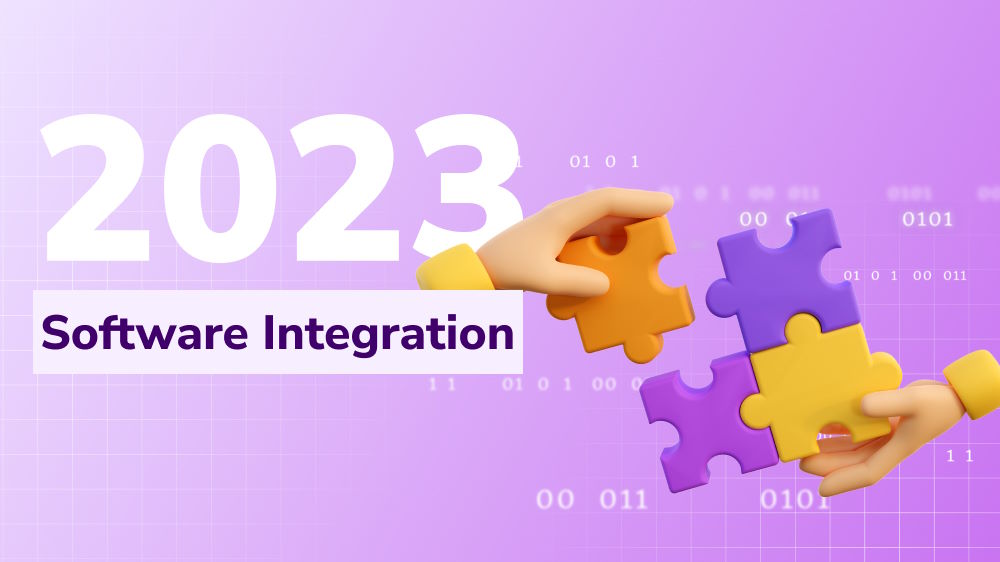What Is Core Banking? An In-depth Look at The Heart of Banking

Content Map
More chaptersThe banking sector is as actively engaged in digital transformation as any other sector. Banking services have been utilizing technologies, including big data analytics, blockchain, cyber security, mobile banking, and artificial intelligence, to meet the customer’s evolving needs.
One such need is the ability to make transactions quickly and freely. To be specific, customers can go to any branch of the bank to do transactions rather than being tied down to a specific branch. They are the bank’s customer, not any particular branch’s customer. All of this is achieved thanks to core banking systems.
This article will provide everything one needs to know about core banking, including what it is, how it works, and how core banking solutions have transformed the industry.
What Is Core Banking?

Definition
According to Gartner, core banking software is a type of backend infrastructure that manages regular banking transactions and keeps track of account and financial record revisions. These systems typically include interfaces to general ledger systems and reporting tools and features for handling loans, deposits, and credit.
Core banking systems typically manage primary operations, giving customers the freedom to perform transactions from their chosen branches. Activities a core banking platform handles include:
- Loans.
- Deposit accounts.
- Mortgages.
- Payments.
- Customer relationships management activities like updating customer data and account balance.
Types of Core Banking Systems

There are several ways to categorize core banking systems, e.g., based on the different aspects of banking operations (Retail banking systems, universal banking systems, private banking systems) or based on their structure. In this article, we will categorize core banking based on its structure. With this in mind, there are three types of core banking systems: Monolithic core banking systems, modular core banking platforms, and cloud-native core banking solutions.
Monolithic Core Banking Systems
Traditional banks have relied on monolithic core banking systems. This means that all of the bank’s services are centralized in one software application. Any changes to the single code base are both complex and risky - make one mistake, and the entire system goes down.
As a result, banks are not willing to take any risk that comes with changes, meaning they are also possibly resisting digital transformation.
Modular Core Banking Platforms
No longer taking the all-or-nothing approach, modular banking allows incumbents and startups to expand their banking capabilities. This is all thanks to the piece-by-piece construction approach of modular banking. With single modules and loosely coupled capabilities, organizations can choose the essential microservices only and slowly add more pieces. It can be difficult, however, to swap out old modules with newer ones since the pieces already fit together perfectly.
Cloud-Native Core Banking Solutions
Cloud-native core banking is a modern, scalable, and adaptable public cloud-based banking solution that incorporates advanced technologies like artificial intelligence, machine learning, third-party APIs, and interoperability to promote financial innovation. However, there are still concerns regarding cyber security and regulations.
Basic Components of Core Banking
As a system that processes daily banking transactions, the backend system of core banking is made up of the following basic components:
Account Management
This module tracks the bank’s financial operations, such as payments, loans, and transactions.
Operations
This is the center that manages all the transactions and day-to-day operations like deposit management, loan management, etc.
Risk & Compliance Management
This module facilitates secure transactions by identifying risks and frauds and mitigating them. It is also in charge of monitoring the adherence to financial laws and regulations.
Reporting
Just as the name suggests, reporting is the module that generates reports so executives can keep track of the transactions and overall performance.
Customer Relationship Management
This module is where all the customer data is stored and tracked. This includes all their transaction and interaction history.
How Does Core Banking Work?

Core banking systems operation systems involve the combination of various processes to ensure the simplifying of banking processes.
- Transaction Initiation: A customer initiates a transaction through a channel, e.g., at physical bank branches or online banking platforms. The transaction might involve deposits, withdrawals, or loan applications.
- Data Capture and Processing: The transaction is then captured and processed by the system. It is processed in real time or in batches.
- Account Management: Then, the system moves on to update balances, transaction histories, or any other relevant account information. The data is also updated throughout the entire banking infrastructure to ensure data accuracy and consistency.
- Security and Compliance: Core banking platforms often incorporate strong security measures to protect the data. Additionally, organizations need to ensure that they comply with banking laws and regulations.
- Reporting and Analytics: Banking systems generate reports on customer behavior and key metrics, providing analytics for monitoring and informed decision-making.
- Maintenance and Updates: Finance is an ever evolving and changing sector. Hence, core banking systems need to frequently maintain and adapt to changes and technological advances.
Core Banking Advantages
In 2023, the market for core banking software was estimated to be worth USD 15.54 billion worldwide. The market is expected to increase at a CAGR of 17.7% from USD 17.00 billion in 2024 to USD 62.75 billion by 2032.
The impressive growth of core banking is thanks to its attractive benefits.
Enhanced Customer Experience
As mentioned at the beginning of the article, this core banking is the core system that gives customers the choice to process their transactions at any chosen branch at their own convenience, saving them time and cost moving around. It also provides customers with 24/7 banking services and assistance.
Improved Operational Efficiency and Scalability
Core banking services enable companies to meet customer demands and evolving industry standards. Their flexibility provides banking institutions with the agility necessary to maintain high-quality operational efficiency and security.
Cloud-based core banking solutions allow banks to scale up or down in response to customer service demands. This system supports banking processes even during peak service periods, eliminating the need to constantly monitor the system for fear of potential downtime due to increased traffic.
Real-Time Transactions and Updates
Cloud-based core banking systems can process a large volume of data quickly with little to no delay. This allows real-time transactions and updates. Hence, customer requests are processed quickly, and the organization’s productivity is improved.
Not only are the processes happening in real-time, but they are also extremely accurate with minimum errors.
Centralized Data Management
Core banking systems act as a centralized location for all of a bank’s financial data, enabling compliance with laws and regulatory standards. With easy record management, executives can conveniently access data and generate reports. Additionally, the system simplifies the process of submitting documents to government or regulatory bodies.
Core Banking vs. Traditional Banking Systems
If we take a quick look at core banking vs. traditional banking systems, a few differences stand out.
- The core banking process time is much faster thanks to technological integration.
- Core banking offers customers an enhanced digitalized experience.
- It is easier for core banking to scale compared to traditional banking.
- Core banking minimizes human mistakes in data management and processing.
The list goes on, but all in all, core banking systems and traditional systems both offer basic banking services. However, core banking is more focused on delivering customers a better customer experience with the help of technology.
Core banking is not perfect and has its weaknesses, too. For example, data storage often presents as an issue to financial institutions. Moreover, older core banking systems find it hard to evolve and adapt.
Even then, core banking is one of the key technologies of modern finance. If you are interested in updating your legacy financial systems or simply want to know what it takes to build the software of your dreams, don’t hesitate to contact Orient Software! We are happy to answer your questions within three business days. Contact us today!







